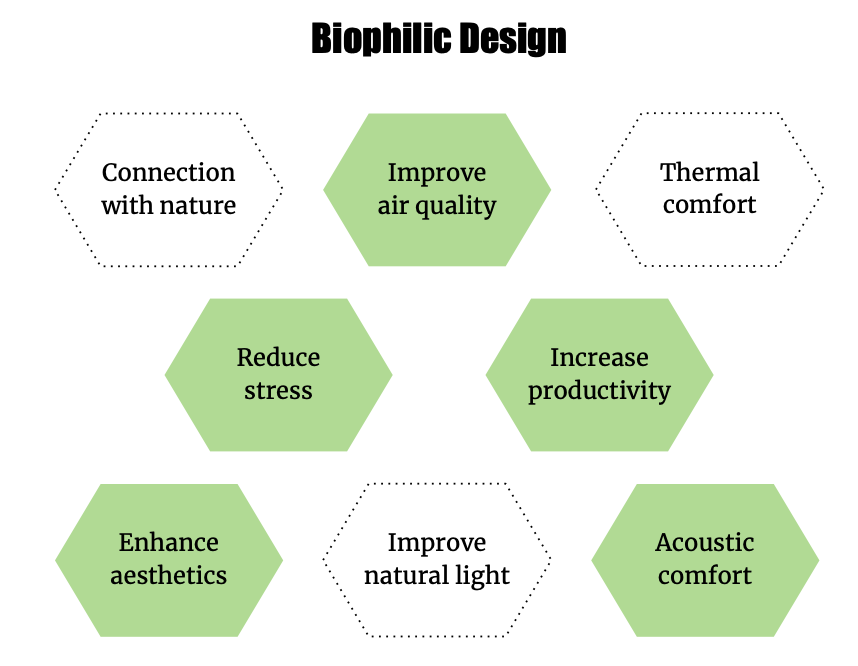Biophilia: more than a cactus on your desk
In 1984, the biologist Edward Osborne Wilson defined biophilia as humankind’s innate biological connection with nature, and it is now being adopted by architects and designers as there is a strong connection between greenery and healthy built environments.
Biophilic design seeks to connect people with nature. We spend around 90% of our time indoors, therefore we better make it enjoyable. Biophilic designed buildings integrate the use of natural landscape features, patterns, and colors that create a more productive and pleasant environment.
Incorporating direct or indirect elements of nature into the built world promotes wellbeing by providing a calm and restorative space that helps to prevent Sick Building Syndrome, and reduce absenteeism and presenteeism. In addition, they decrease energy use as they improve natural lighting and thermal comfort levels.
Biophilic elements reduce ambient noise and promote efficient use of water when adopting xeriscaped landscapes, which need little or no water beyond what the natural climate provides. Green building certification requirements such as LEED, WELL, BREEAM, and Living Building Challenge, aligns with these design principles.
Wilson’s biophilia hypothesis suggests that there is an instinctive bond between human beings and other living systems. Biophilia design is more than a cactus on your desk, it keeps the environment on your mind.
